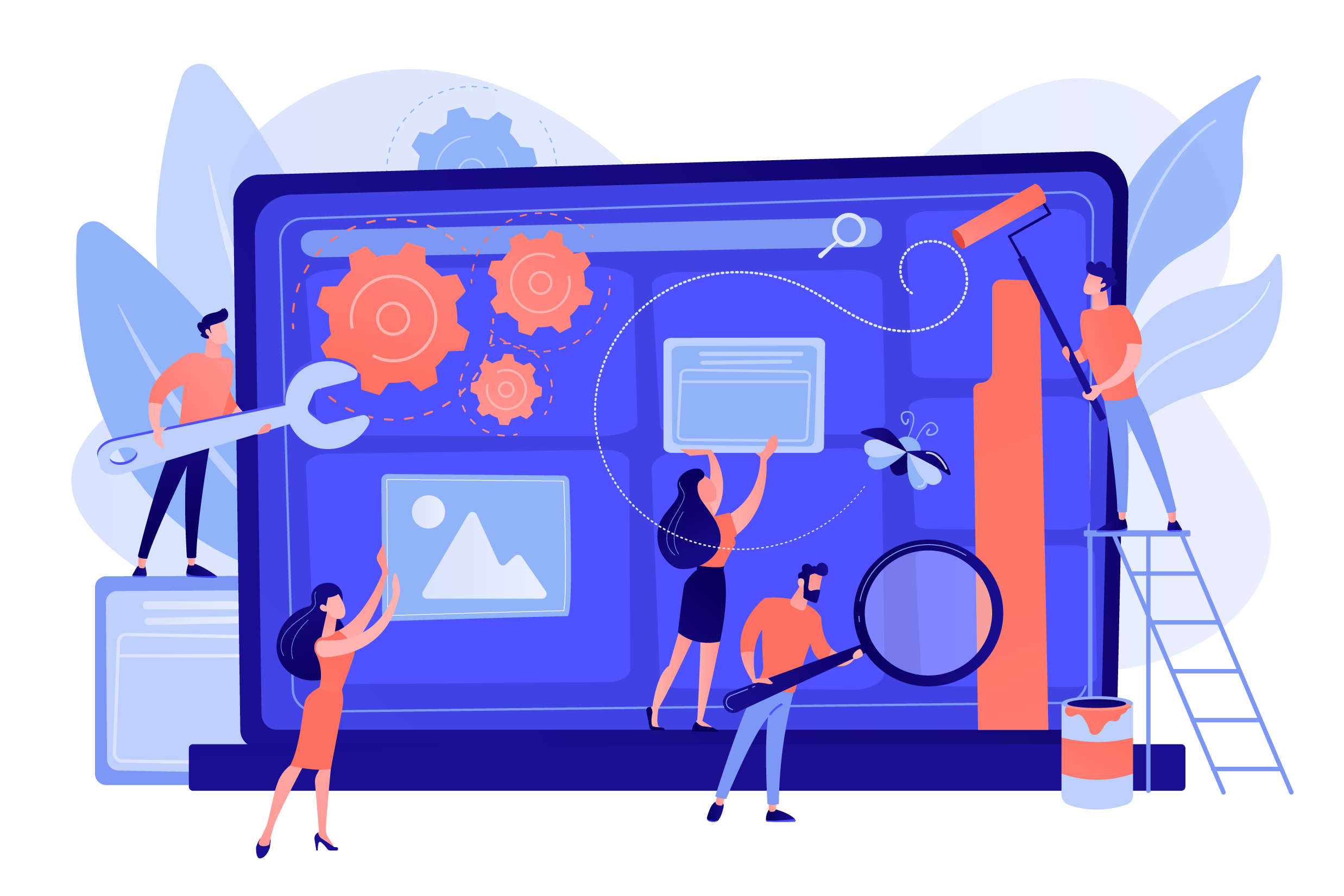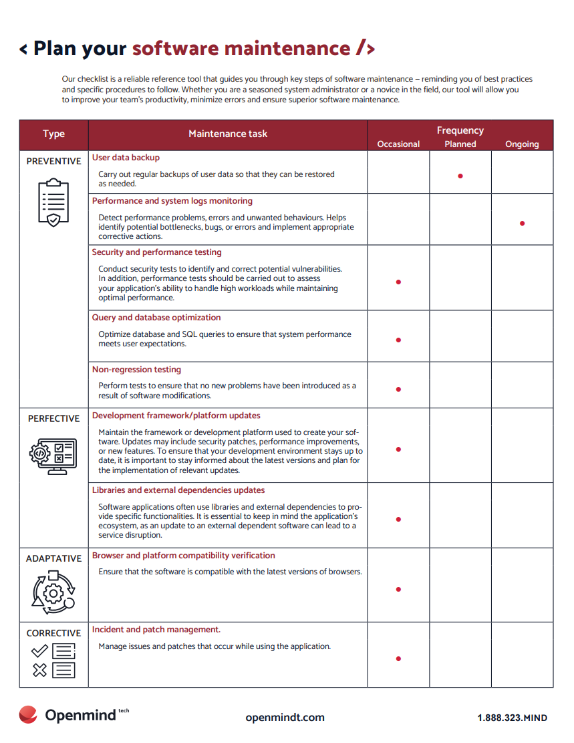Optimize your application maintenance management with our comprehensive checklist tool.
Give your application maintenance management a new lease on life with our simplified tool.

Software maintenance is an essential process to ensure the stability, security and performance of your applications and IT systems. It consists of monitoring, managing and optimizing existing software to ensure its proper functioning and to optimize its use. We will explore the definition of software maintenance, its benefits and process, to help you understand the importance of this practice to your business.
Software maintenance refers to the activities undertaken by organizations to ensure the proper functioning, stability and reliability of software throughout its life cycle. Software maintenance is a set of processes, actions and practices that aim to correct errors, improve performance, update functionality and ensure the security of the software. It is essential to cope with changes in its environment, thus guaranteeing its continued operation.
Software maintenance, as essential as it may be, can allow your software to survive any problem encountered in daily life. Because no matter how much you invest in software, it will never be safe from encountering anomalies.

Give your application maintenance management a new lease on life with our simplified tool.

Just as a car requires regular maintenance to stay performing and reliable, software also needs similar attention to ensure it is working properly. Just as you change oil, replace filters and check fluid levels in your car, software maintenance involves regular updates, patches and checks to ensure that the software remains up-to-date, secure and optimized. Just as you take care of your car to avoid costly breakdowns, preventive software maintenance helps you anticipate and solve problems before they become critical.
By taking a proactive approach, you extend the life and performance of your software, just as you increase the longevity and performance of your car through regular maintenance. Thus, it is crucial to consider software maintenance as an essential aspect of managing and optimizing IT systems, just as maintaining a car is essential to ensure its performance and durability.
In short, software maintenance is essential to maintaining the performance and stability of your IT system. We have seen the benefits of regular maintenance as well as the types of maintenance that are possible, such as corrective, preventive and evolutionary maintenance. Don’t forget that software maintenance is a real checklist to optimize the longevity and proper functioning of your computer applications. This good practice allows you to ensure that your product will remain stable, functional, fast, but above all, secure.
For more insights on ensuring the success of your software projects, check out our related article: Software Development Challenges: 3 Pitfalls to Avoid for a Successful Project. In this article, we discuss common challenges in software development and how to navigate them effectively to achieve your project goals.
Subscribe to receive our exclusive updates directly to your email.

Tell us more about your needs so that we can better route your project to our specific SWAT team.
1
During the brainstorming phase, we work with you to identify potential solutions to your business challenges to generate the technology response that aligns with your business objectives.
2
Through our requirements gathering process, we work closely with you to define and prioritize your needs, ensuring that our solutions are tailored to meet your specific requirements.
3
This phase marks the beginning of our partnership. We’ll finalize the project plan and establish clear communication channels to ensure a smooth and successful project execution.